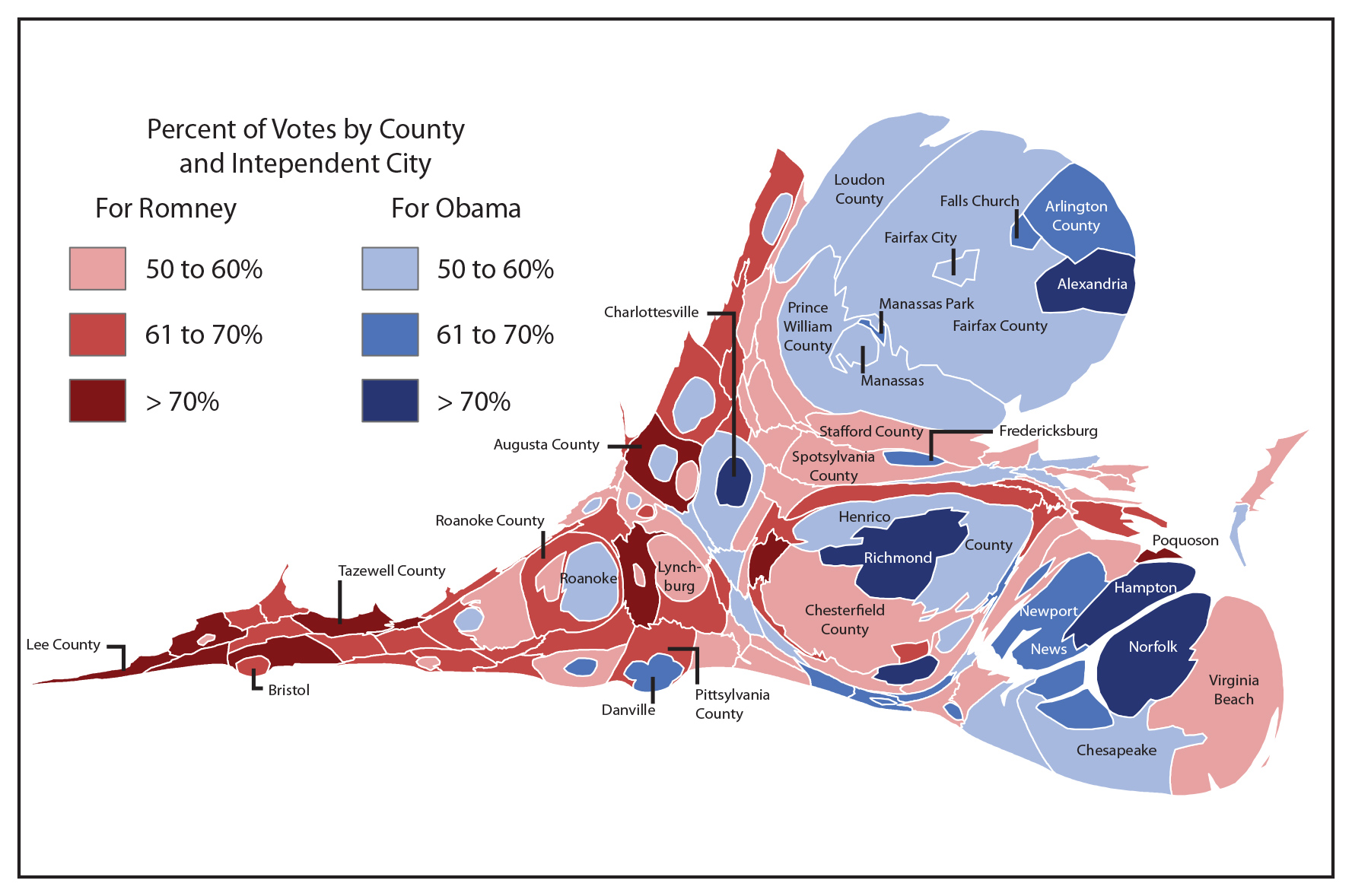Population growth in Virginia slowed last year as fewer people moved to the state, but the commonwealth still outpaced the nation, according to the most recent official state population estimates developed by demographers from the University of Virginia’s Weldon Cooper Center for Public Service.
Virginia’s population grew between 2012 and 2013 by less than 1 percent, or 74,531 people, to increase the state total population to nearly 8.3 million. While growth last year was the slowest in Virginia since before the recession, the commonwealth still grew faster than the nation, which grew by 0.7 percent. Compared to other states, Virginia posted the 14th-highest growth rate and the seventh-largest numerical population gain.
Within Virginia, the large population gains were more than ever concentrated in urban localities, particularly in Northern Virginia.
“Loudoun, Fairfax, Prince William, and Arlington counties, and the city of Alexandria continue to experience considerable growth,” said Hamilton Lombard, the researcher who prepared the estimates. “Together they accounted for more than half of the growth in the commonwealth since 2010, compared to 44 percent between 2000 and 2010.”
While Fredericksburg is the fastest-growing locality since 2010, increasing by more than 15 percent, most urban localities in Virginia also experienced above-average growth, representing a change from the previous decade. Between 2000 and 2010, urban localities grew much more slowly than suburban localities in Virginia; in contrast, during the past four years, many urban areas are among Virginia’s fastest-growing localities, with Arlington, Fredericksburg, Harrisonburg, Radford and Richmond among the cities growing at a rate faster than the state since 2010.
“Due to population aging and lower birth rates, almost half (66) of Virginia’s localities experienced natural decrease (more deaths than births) between 2010 and 2013,” Qian Cai, director of the Demographics Research Group, said. “While many localities gained sufficient population through migration to compensate for these losses, 33 localities in Virginia had a net overall loss in population.”
Most localities that lost population or experienced natural decrease were located outside of the so-called “urban crescent,” which stretches from Hampton Roads to Richmond and up the Interstate 95 corridor to Northern Virginia. In Southwest Virginia, all seven coal-producing counties declined in population between 2012 and 2013.
The Cooper Center’s population estimates, prepared annually, are the official figures for the commonwealth of Virginia. The estimates are based on changes since 2010 in housing stock, school enrollment, births, deaths and drivers’ license issuances. They are used by state and local government agencies in revenue sharing, funding allocations, planning and budgeting.
Details and the full report of the estimates can be found here.
Media Contact
Demographics Research Group, Weldon Cooper Center
meredith.gunter@virginia.edu 434-982-5585
Article Information
January 28, 2014
/content/uva-researchers-virginia-population-growth-slows

